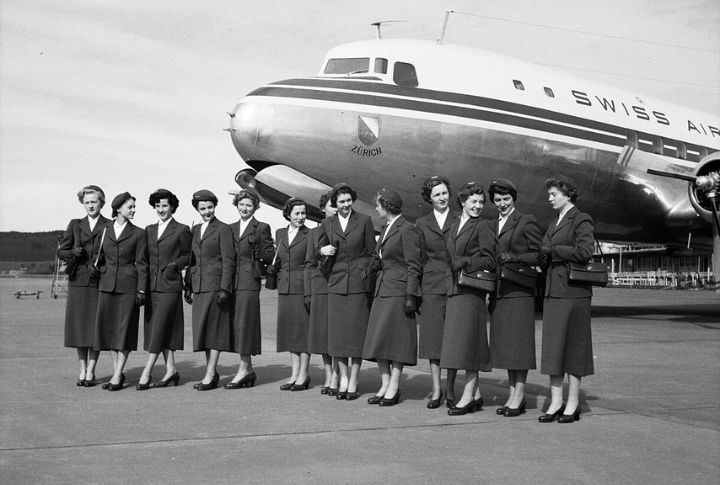
Airports have transformed over the years, and the look and role of flight attendants have changed along with them. Known for blending style with service, these crew members shaped how people saw air travel. This collection of 20 photos highlights key moments that reveal their evolving story in the skies.
1930s Aviation Nurses

This 1930s U.S. Navy photo predates World War II and the official use of “flight attendant.” These aviation nurses weren’t serving in wartime yet. They were pioneering in-flight care during naval training missions and peacetime evacuations. Their role helped shape what airborne medical support would soon become under fire.
World War II Duties
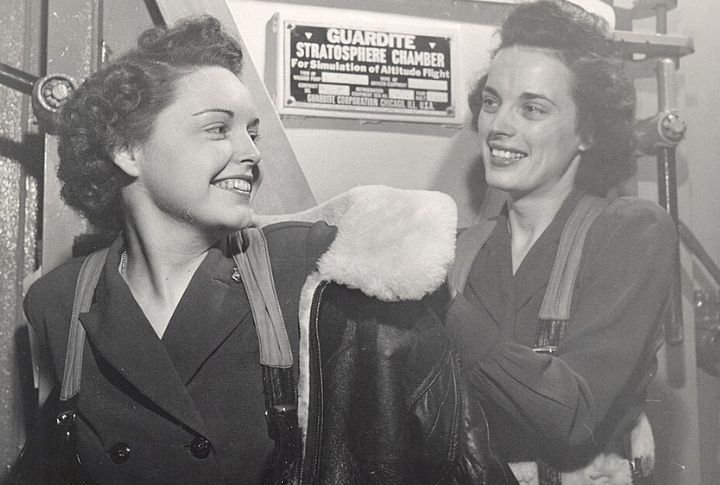
The smiles were gone, replaced by grit. In this 1940s Navy photo, flight attendants (trained nurses) work midair to stabilize the wounded. These wartime medics weren’t handing out drinks; they saved lives in flight, navigated turbulence, and triaged with every mission.
Male Flight Attendants Debut
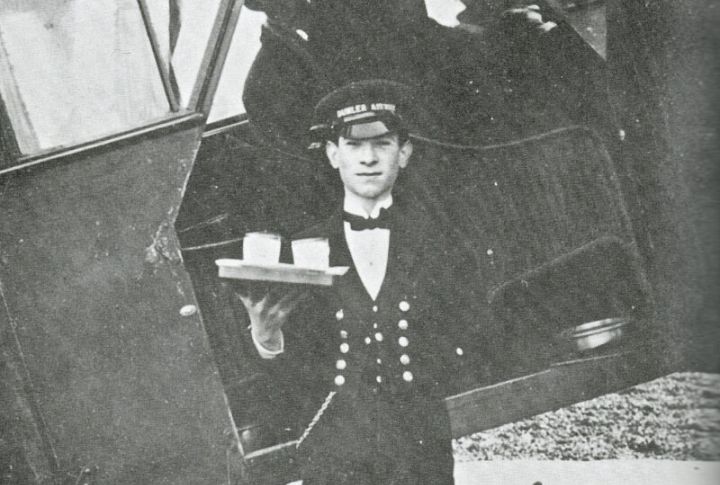
Jack Sanderson, pictured in 1912, was the first documented male flight attendant hired by Germany’s DELAG to assist passengers on rigid airships. Early cabin crews were exclusively male, performing duties akin to porters. The hiring of women in 1930 by Boeing Air Transport shifted public perception.
1960s Mod Fashion
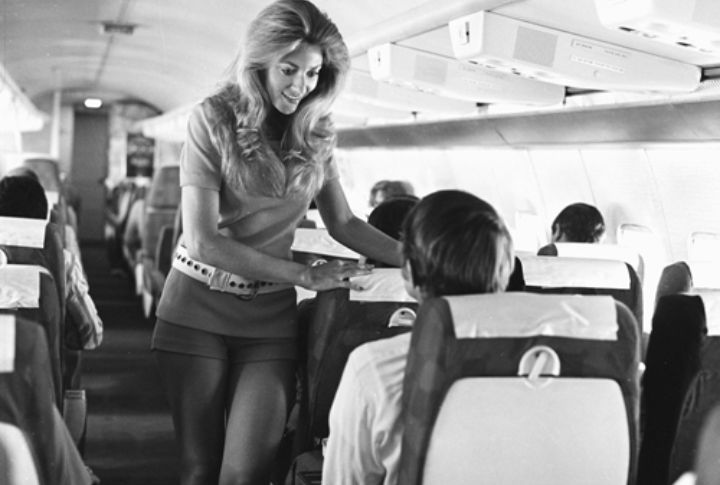
Check out this blast from the Jet Age—yes, that’s a flight attendant rocking a miniskirt at 35,000 feet. Airlines like PSA and Braniff were serving up fashion statements. With Pucci prints and mod uniforms, the style was part of the in-flight experience.
Early Uniform Simplicity
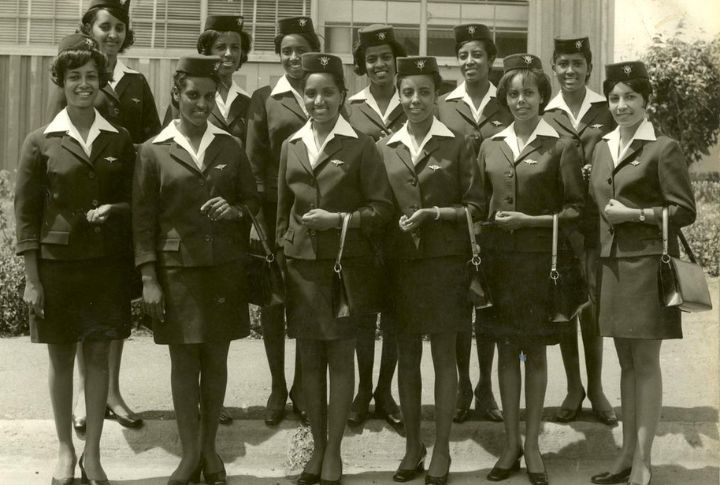
In the 1970s, Ethiopian flight attendants wore bright yellow blazers that prioritized cultural clarity over high fashion. This photo from Ethiopian Airlines reflects state pride during the airline’s Pan-African expansion. Unlike Western carriers chasing trend cycles, Ethiopia’s approach favored national symbolism and practical tailoring for tropical climates.
Pan Am Prestige

Pan Am uniforms were stylish and strategic. The airline’s signature suits, white gloves, and pillbox hats symbolized elite service in the 1960s and ’70s. Flight attendants were selected for language skills and composure. Their image in press photos and advertising defined international air travel luxury for an entire generation.
1980s Corporate Style
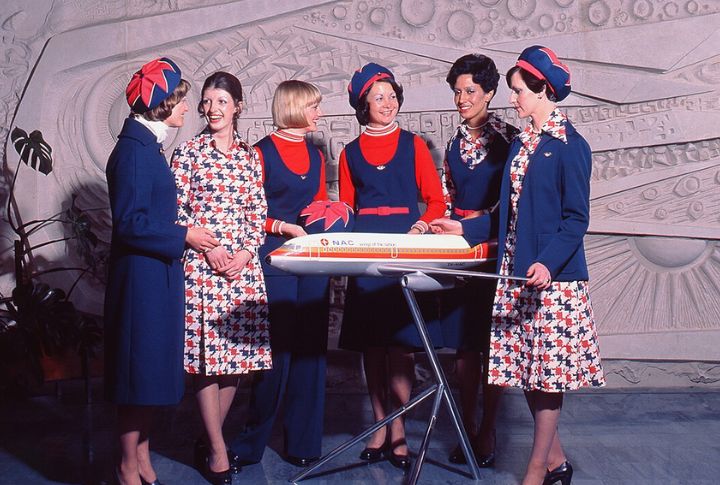
This photo shows the sharp, professional style flight attendants wore in the 1980s—a big change from the bold looks of earlier decades. Bright colors gave way to navy suits and no-nonsense polyester, reflecting a time when airlines leaned into a more serious, business-first image.
International Uniform Variants
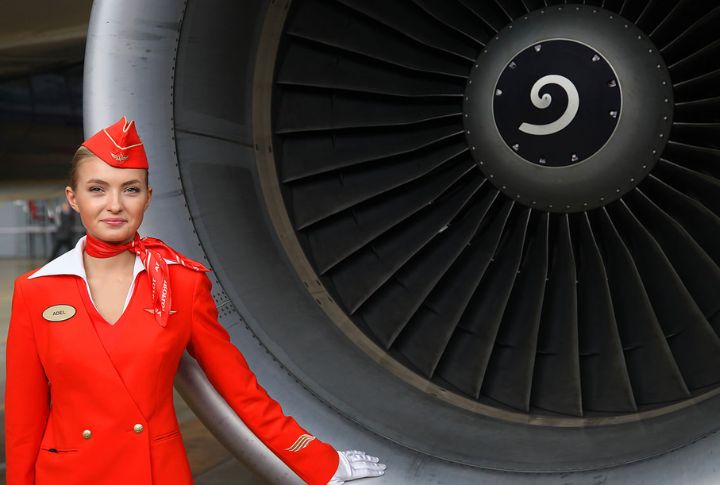
Uniforms were local expressions. This Aeroflot stewardess photo shows a Soviet-era design: structured lines and a military-inspired cut. Airlines in Asia, the Middle East, and Eastern Europe developed distinct aesthetics reflecting national values and climate, all while aligning with global aviation professionalism.
Early 2000s Trends

The flashy colors of previous decades faded. What replaced them? Sleek, practical, and sometimes bland design. As seen in this Aeroflot image, the blue-gray uniforms mirror the cabin’s muted tones. After 9/11, visual branding leaned heavily into professionalism and safety reassurance.
Airline-Specific Styles
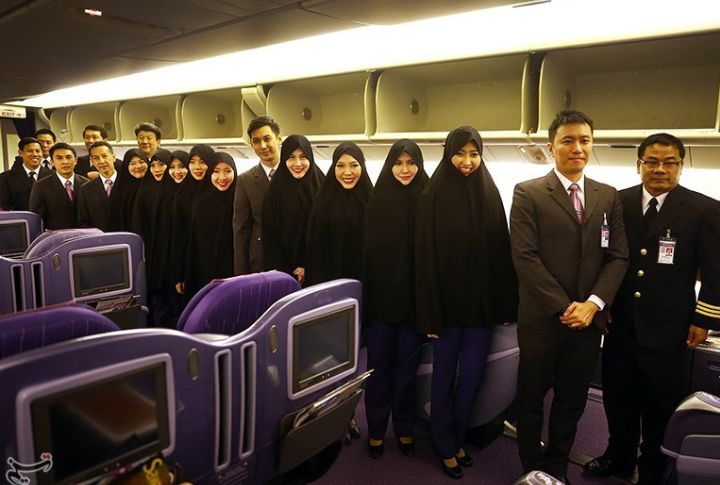
Design often came down to brand identity. Thai Airways, for example, incorporated traditional silks and color palettes tied to Thai royalty. In the image from their Tehran route launch, the uniform becomes more than attire—it reflects heritage, diplomacy, and a carefully crafted visual message.
Cultural Representation Efforts
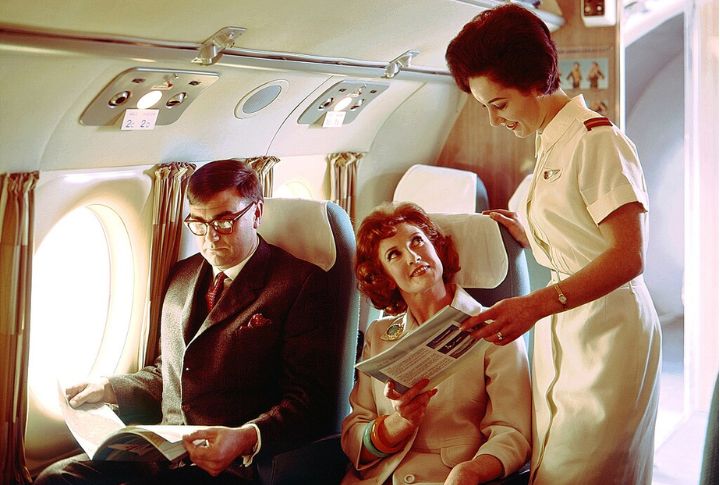
A 1959 summer uniform from New Zealand captures a subtle but meaningful design shift. Airlines began incorporating indigenous motifs or heritage color schemes into cabin crew attire. These weren’t always loud visual statements, but they acknowledged where the airline came from and who its people represented in flight.
1950s Glamour Looks

Airlines like TWA and BOAC in the 1950s sold an experience, and appearance was central to the pitch, as this image shows. Uniforms were meticulously designed to project luxury and refinement: tailored skirts, matching gloves, and hats enforced a polished, almost cinematic look.
High-Fashion Collaborations
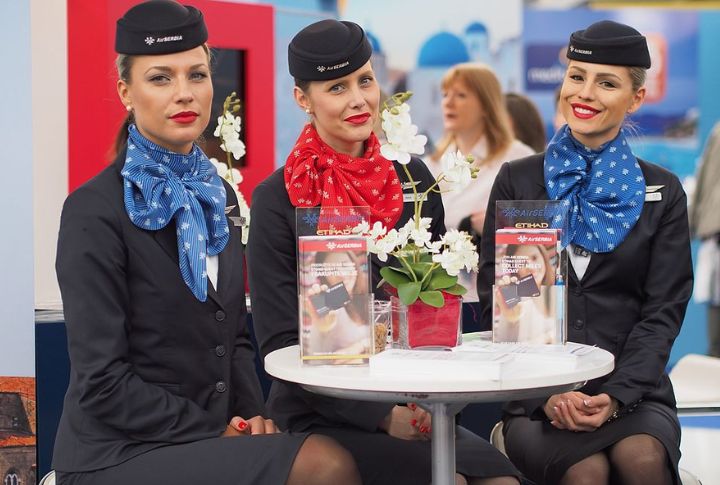
Giorgio Armani, Vivienne Westwood, and Christian Lacroix all designed flight attendant uniforms at one point. Air Serbia’s uniforms, as seen in this photo, reflect that fashion-forward legacy. These collaborations aimed to improve the airline’s image and create recognition beyond terminals or runways.
In-Flight Service Images

Caught mid-demonstration, the Germanwings crew member performs a familiar safety briefing—a task that’s both routine and essential. The image highlights how cabin duties have expanded over time, merging service with precision under the constant gaze of passengers.
1970s Color Explosion
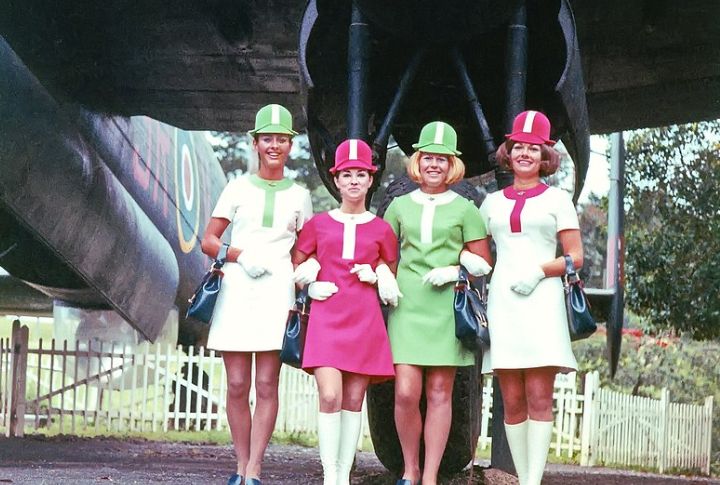
Nothing about the 1970s was subtle, and neither were the uniforms. This image shows New Zealand’s cabin crew in eye-popping pinks and greens, tones echoing the era’s disco craze and visual boldness. Uniforms became flying advertisements that matched the airline’s brand identity.
Off-Duty Publicity Shots
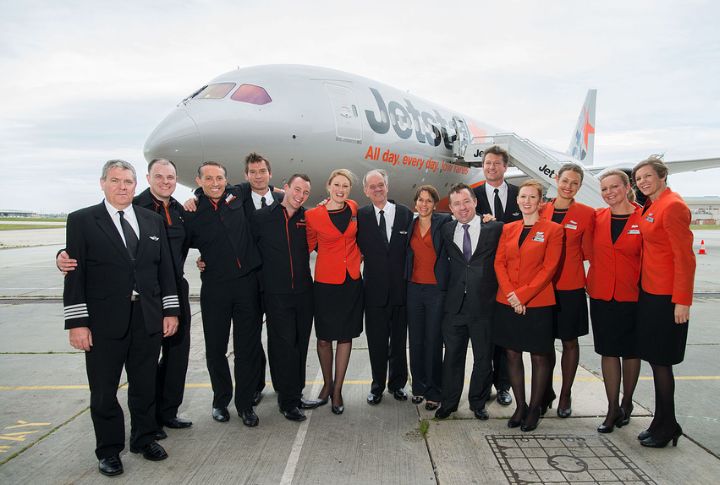
Jetstar Airways’ press photo features pilots and crew in front of the aircraft, posed rather than in operation. These promotional shots were PR tools meant to humanize staff or showcase fleet upgrades. The coordinated uniforms and friendly stance help shape a polished, approachable brand image.
Iconic Advertisement Posters
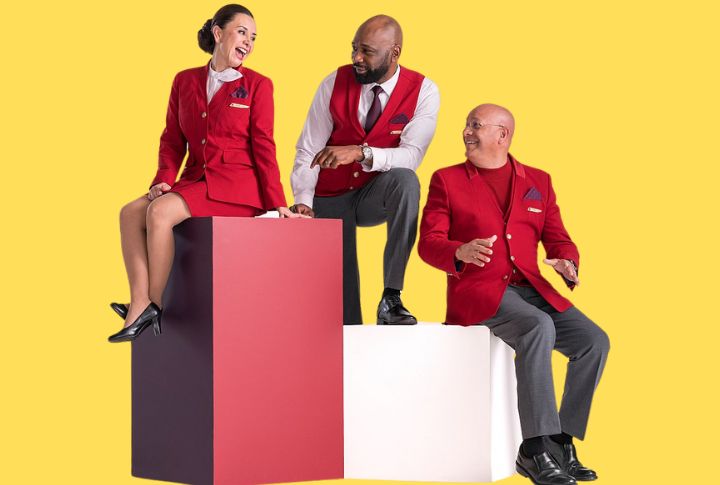
Posters became the visual shorthand for airline prestige. This Delta poster photo plays on upward motion and elegance. Flight attendants featured prominently in these ads, not just for fashion but as symbols of service quality. Their placement at the center of airline marketing strategy was deliberate and industry-wide.
Training And Recruitment Photos
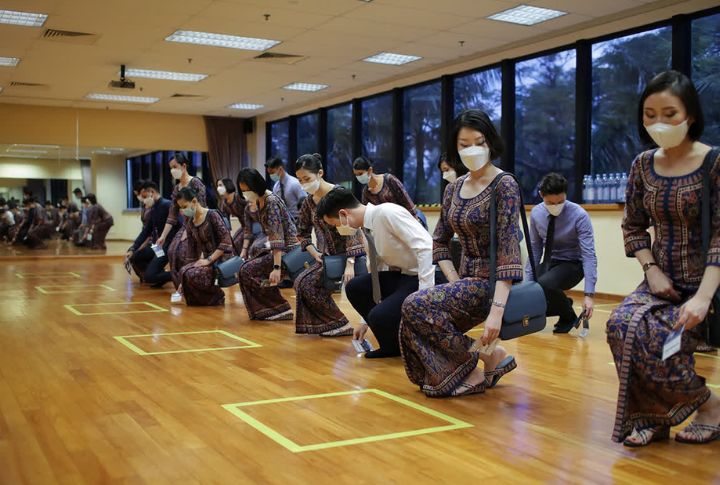
In Singapore Airlines’ photo, trainees sit upright in deportment class. It’s a detail-heavy session teaching posture and service scripts. These photos reveal how seriously airlines approached presentation. The training spanned weeks and covered far more than safety; it was about maintaining brand discipline.
First-Class Cabin Moments
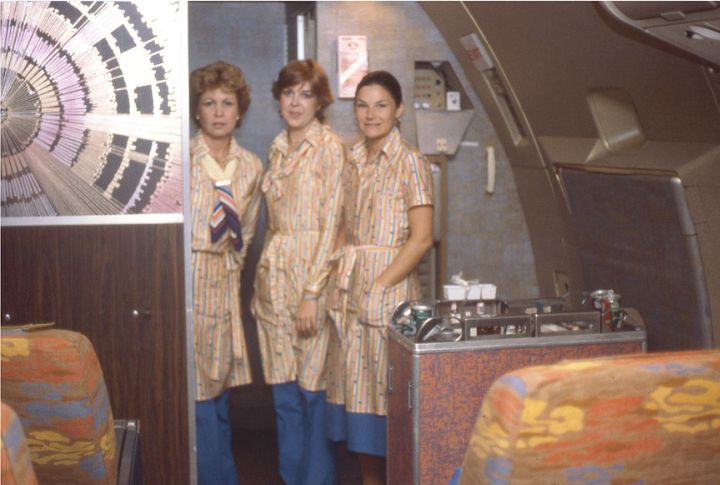
First-class cabins in the mid-20th century mirrored fine dining and luxury rail travel. Photos from the 1950s through 1980s show attendants uncorking champagne and managing lounge-style seating areas. Service emphasized timing and elegance. Crews in these cabins operated more like hospitality specialists than transport staff.
Pandemic-Era Gear
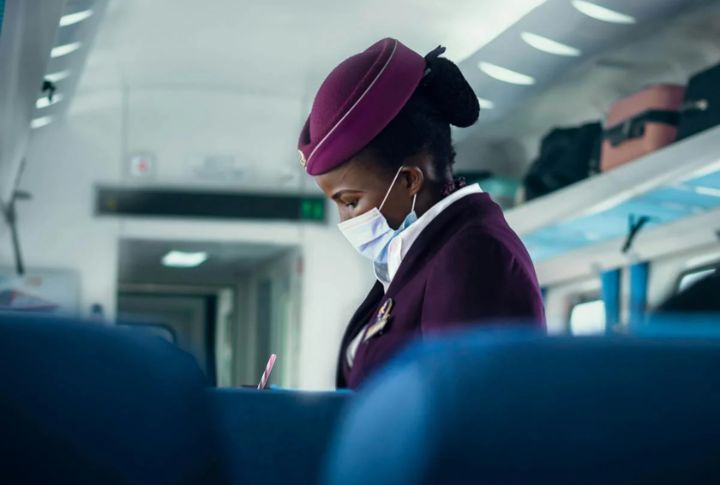
Masks became part of the uniform. In this photo, a flight attendant wears protective gear mid-aisle, a visual marker of air travel’s shift during COVID-19. Safety drills took on new meaning. The focus turned inward on passenger wellbeing and the frontline nature of flight work.

